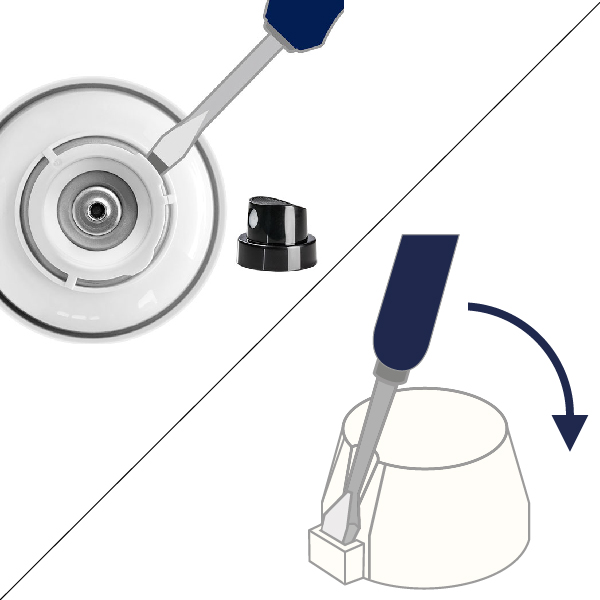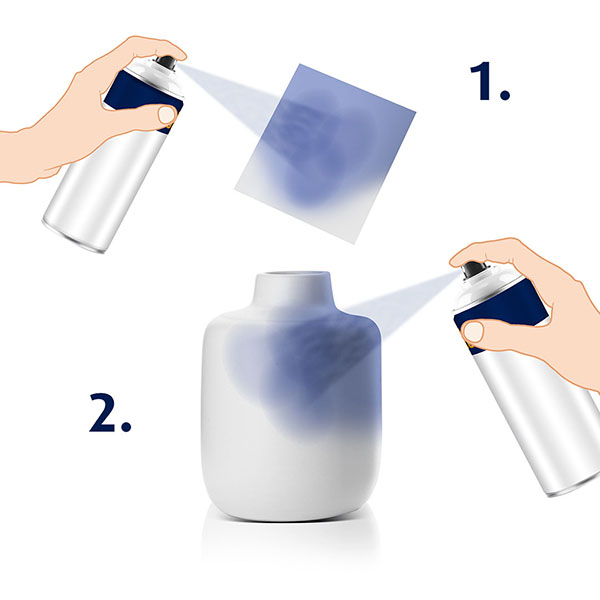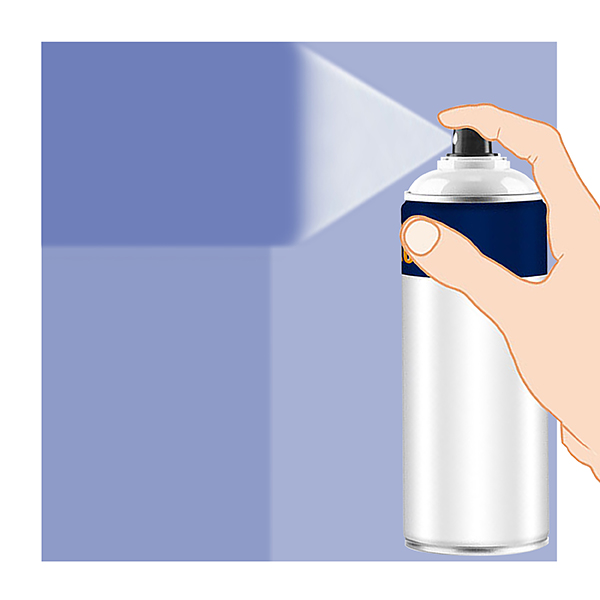Preparation
![[Translate to English:] Lackierumgebung [Translate to English:] Lackierumgebung](/fileadmin/user_upload/Inhalt/Anwendung/Schritt-fuer-Schritt/Vorbereitung/belton_web_schritte_lackierumgebung_600x600px.jpg)
Painting environment:
In most cases, it is possible to paint indoors and outdoors, subject to the weather conditions, an adequate air supply and health & safety considerations. Therefore, always ensure good ventilation and wear a safety mask when spray painting in closed rooms. Do not spray in windy conditions because this can impact on the spray mist and cause irregularities.
![[Translate to English:] Umgebungstemperatur [Translate to English:] Umgebungstemperatur](/fileadmin/user_upload/Inhalt/Anwendung/Schritt-fuer-Schritt/Vorbereitung/belton_web_schritte_umgebungstemperatur_600x600px.jpg)
Ambient temperature:
The work temperature should lie between 5 and 35° C, the ideal painting temperature lies between 15 and 25° C. At lower temperatures, the paint dries slower, at higher temperatures more quickly. Likewise, the humidity should not be too high. Dryer air is better suited for painting.
![[Translate to English:] Vorbehandlung des Untergrundes [Translate to English:] Vorbehandlung des Untergrundes](/fileadmin/user_upload/Inhalt/Anwendung/Schritt-fuer-Schritt/Vorbereitung/belton_web_schritte_vorbehandeln_600x600px.jpg)
Pre-treatment of the surface:
The painted object should always be clean, dry and free of grease and, if necessary, pre-treated with a suitable cleaning agent. We generally recommend sanding the surface to improve the adhesion of the topcoat. Tip: The higher the number of pores (P) of the sandpaper, the finer the sanding (e.g.: P2000 is finer than P180). Remove the sanding dust after sanding.
The painting process
![[Translate to English:] Tempo und Abstand [Translate to English:] Tempo und Abstand](/fileadmin/user_upload/Inhalt/Anwendung/Schritt-fuer-Schritt/Lackieren/belton_web_schritte_tempo_abstand_600x600px.jpg)
Speed and distance:
If the painting speed is too high, spray mist (rough surface) can be created and if the speed is too low, drips will occur. Paint at an even speed with a distance of approx. 15 - 30 cm, depending on the spray paint. The ideal distance is stated on the label or on the respective product page.
Follow-up steps
![[Translate to English:] Trockenzeiten beachten [Translate to English:] Trockenzeiten beachten](/fileadmin/user_upload/Inhalt/Anwendung/Schritt-fuer-Schritt/Nachbereitung/belton_web_schritte_trocknungszeit_600x600px.jpg)
Observe the drying times:
The drying times vary depending on the product, temperature, humidity and layer thickness. There is more precise information on the respective spray can label or on the product page. The following applies in most cases: solvent-based spray paints are dust dry after approx. 20 min., dry-to-touch after 2 hours and completely hardened after approx. 24 hours;
water-based spray paints are dust dry after approx. 45 min., dry-to-touch after 3 hours and completely hardened after approx. 24 hours.
![[Translate to English:] Überlackieren [Translate to English:] Überlackieren](/fileadmin/user_upload/Inhalt/Anwendung/Schritt-fuer-Schritt/Nachbereitung/belton_web_schritte_klarlack_600x600px.jpg)
Painting over:
It may be advisable to apply a clearcoat depending on whether or not the painted object is indoors or outdoors, frequently touched or otherwise subject to heavy use. However, not all spray paints can be coated with clearcoats. For more information, please see the respective product detail pages or the belton spray paint label.

![[Translate to English:] Schritt für Schritt](/fileadmin/user_upload/Header/belton-schritt-fuer-schritt_1920x700.jpg)
![[Translate to English:] Lackiersicherheit [Translate to English:] Lackiersicherheit](/fileadmin/user_upload/Inhalt/Anwendung/Schritt-fuer-Schritt/Vorbereitung/belton_web_schritte_lackiersicherheit_600x600px.jpg)
![[Translate to English:] Grundierung [Translate to English:] Grundierung](/fileadmin/user_upload/Inhalt/Anwendung/Schritt-fuer-Schritt/Vorbereitung/belton_web_schritte_grundierung_600x600px.jpg)

![[Translate to English:] Aufschütteln [Translate to English:] Aufschütteln](/fileadmin/user_upload/Inhalt/Anwendung/Schritt-fuer-Schritt/Vorbereitung/belton_web_schritte_schuetteln_600x600px.jpg)

![[Translate to English:] Lackierbeginn [Translate to English:] Lackierbeginn](/fileadmin/user_upload/Inhalt/Anwendung/Schritt-fuer-Schritt/Lackieren/belton_web_schritte_lackierbeginn_600x600px.jpg)

![[Translate to English:] Lackspraydosenausrichtung [Translate to English:] Lackspraydosenausrichtung](/fileadmin/user_upload/Inhalt/Anwendung/Schritt-fuer-Schritt/Lackieren/belton_web_schritte_lackdosenausrichtung_600x600px.jpg)
![[Translate to English:] Ventil leersprühen [Translate to English:] Ventil leersprühen](/fileadmin/user_upload/Inhalt/Anwendung/Schritt-fuer-Schritt/Nachbereitung/belton_web_schritte_leerspruehen_600x600px.jpg)